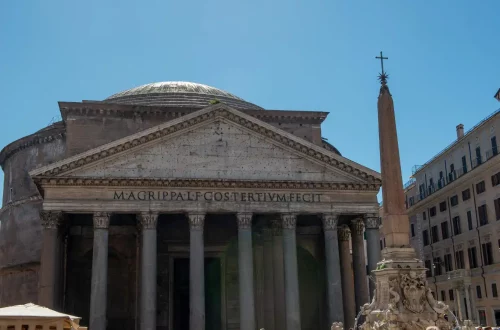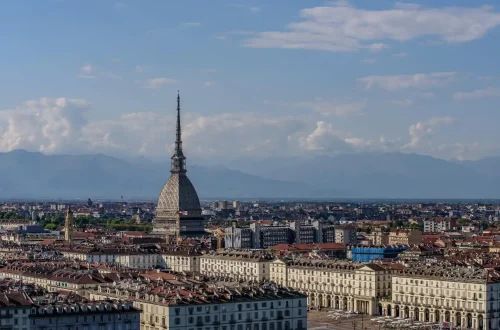The history of Italian immigration to the United States dates back over a century and has left a lasting impact on the nation’s cultural fabric. Italian Americans are among the largest ethnic groups in the country, with millions of individuals identifying as descendants of Italian immigrants.
Italian immigration to the United States began in earnest in the late 19th century, driven by dire economic conditions in Italy. Around 25,000 Italian immigrants had settled in the U.S., many of whom were Northern Italian refugees from the wars of Italian unification, known as the Risorgimento.
The period between 1880 and 1924 saw a significant influx of Italian immigrants, with more than four million Italians arriving in the United States. Half of this number immigrated between 1900 and 1910 alone, primarily fleeing rural poverty in Southern Italy [1].
The great influx of immigrants led to significant changes within the country. For instance, one of the most notable destinations for Italian immigrants was New York City, where the Little Italy neighborhood emerged.
Consisting of about 30 city blocks on the Lower East Side, Little Italy became a community that preserved Italian culture and traditions. The Italian American community continued to grow, and by 1915, it was estimated that approximately 13 million people had immigrated from Italy to the United States [2].
As of January 2021, about 2.3 million Italians lived on the American continent [3]. According to 2023 data, there are approximately 17,253,941 Italian Americans in the United States, representing about 5.15% of the total population. This makes Italian Americans the nation’s fourth-largest European ancestry group, following Germans, Irish, and English [4].
A profile from the year 2000 reveals that Italian Americans were above average in their levels of education, income, and occupation. The vast majority, 88%, lived in or near big cities, had small families (one child), low divorce rates (8%), and white-collar jobs (66%). Italian Americans have made significant contributions to various sectors, including business, politics, arts, and academia [5].
Take advantage of specialized assistance to secure your passport for a borderless future.
Italian citizenship eligibility of Italian Americans
The approval of Law No. 74 of May 23, 2025 solidified new limitations for Italian citizenship jus sanguinis. Historically, Italian citizenship recognition had no generational limits, allowing great-grandchildren and further descendants to apply.
The new law restricts eligibility to individuals whose Italian parent(s) or grandparent(s) were born in Italy. If an individual’s parents—but not grandparents—resided in Italy for at least two consecutive years, they may still qualify for citizenship under the eligibility criteria. Additionally, the Italian ancestor must have held Italian citizenship exclusively at the time of their death. This means that if your Italian parent or grandparent naturalized as a citizen of another country, you would no longer be eligible for Italian citizenship.
This law is controversial, as it retroactively regulates past nationality claims, contradicting established legal principles that laws should only govern future events. In fact, the Italian Constitutional Court has ruled in past cases that retroactive restrictions must be proportionate and reasonable.
This suggests that, in the near future, applicants may increasingly turn to the judicial route to challenge unconstitutional changes in citizenship law. For further updates and insights, follow our channels to stay informed.
As of June 2025, the judicial route is the only available option for obtaining Italian citizenship. While all administrative applications will be centralized within a new governmental body in Italy, the specific procedures and operational framework have yet to be determined.
Italian citizens enjoy the ability to live, work, and study in any of the 27 European Union (EU) member countries, with access to a broader job market and reduced tuition fees at universities.
While the benefits of Italian citizenship are significant, the application process can present challenges. Applicants must gather and submit various documents, including birth, marriage, and death certificates of every relative in the line of descent. Additionally, if you lost your place in the consular queue due to the dissolution of waiting lists under the new law, it is recommended to retrieve proof of your original appointment at the consulate, as it may support your application through the courts. These documents may need to be translated and authenticated with an apostille.
Applicants must also navigate complex bureaucratic procedures when applying for Italian citizenship. The process can be lengthy, often requiring several months or even years to complete. However, professional assistance services are available to help streamline the application, ensuring compliance with legal requirements and minimizing delays.
In conclusion, Italian descendants in the United States make up a significant portion of the population. While the citizenship application process can be complex, and recent legal changes may require judicial alternatives, the benefits of Italian citizenship make it a valuable pursuit for many individuals. Exploring one’s heritage and the opportunities of Italian nationality can foster a meaningful connection to the past while opening doors to a promising future.
References
- PBS. (n.d.). Destination America. Retrieved from https://www.pbs.org/destinationamerica/usim_wn_noflash_5.html
- Italian Dual Citizenship. (n.d.). The Lasting Impact of Italian Immigration on American Culture. Retrieved from https://www.italiandualcitizenship.net/the-lasting-impact-of-italian-immigration-on-american-culture/
- Statista. (2021). Number of Italians living in America by length of stay. Retrieved from https://www.statista.com/statistics/1073652/number-of-italians-living-in-america-by-length-of-stay/
- National Italian American Foundation (NIAF). (2023). Italian American Statistics. Retrieved from https://www.niaf.org/news/italian-american-statistics/
- The Order Sons of Italy in America (OSDIA). (2000). A Profile of Today’s Italian Americans. Retrieved from https://www.osdia.org/wp-content/uploads/2017/05/IA_Profile.pdf






